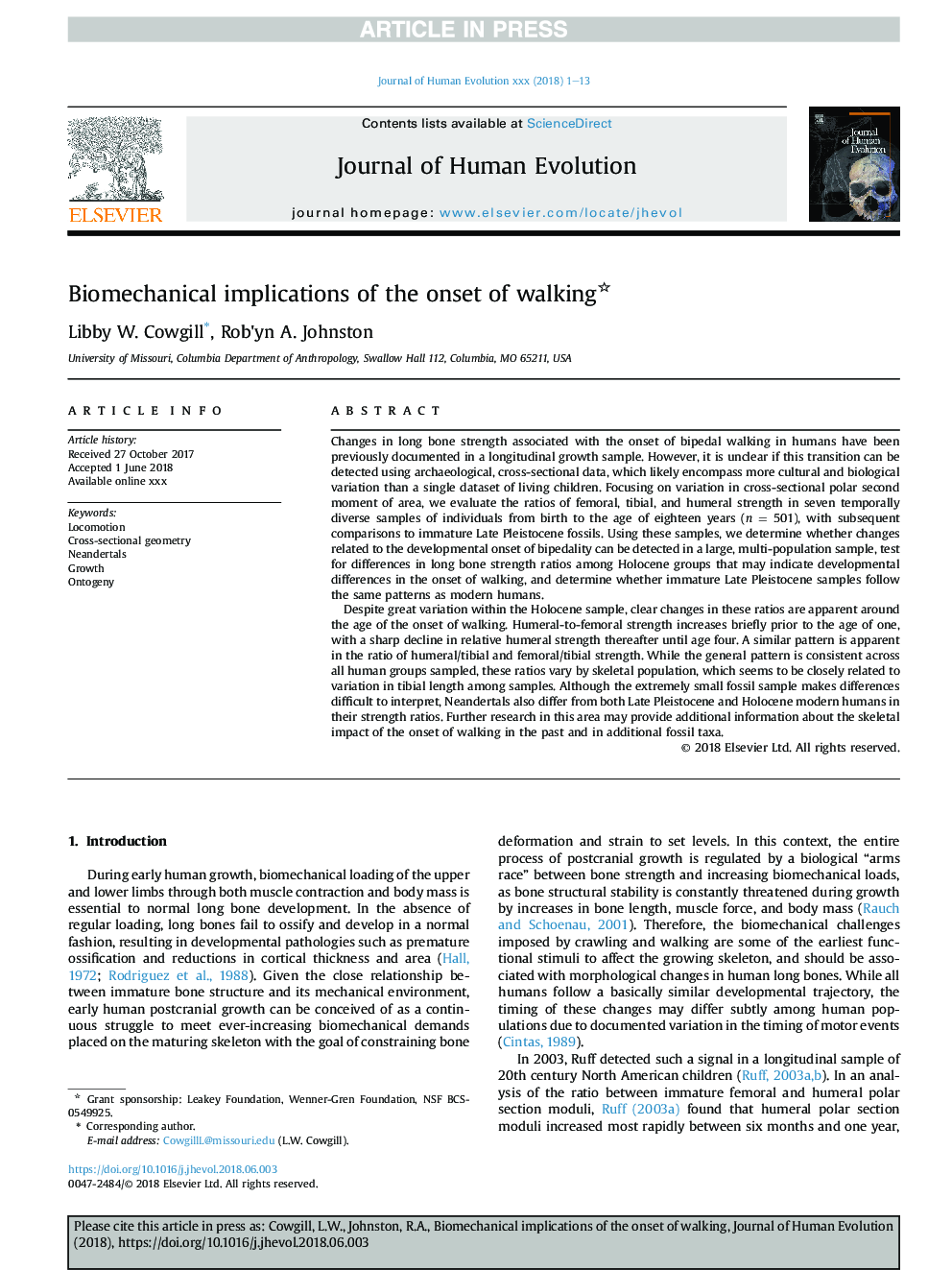| Article ID | Journal | Published Year | Pages | File Type |
|---|---|---|---|---|
| 8887188 | Journal of Human Evolution | 2018 | 13 Pages |
Abstract
Despite great variation within the Holocene sample, clear changes in these ratios are apparent around the age of the onset of walking. Humeral-to-femoral strength increases briefly prior to the age of one, with a sharp decline in relative humeral strength thereafter until age four. A similar pattern is apparent in the ratio of humeral/tibial and femoral/tibial strength. While the general pattern is consistent across all human groups sampled, these ratios vary by skeletal population, which seems to be closely related to variation in tibial length among samples. Although the extremely small fossil sample makes differences difficult to interpret, Neandertals also differ from both Late Pleistocene and Holocene modern humans in their strength ratios. Further research in this area may provide additional information about the skeletal impact of the onset of walking in the past and in additional fossil taxa.
Related Topics
Life Sciences
Agricultural and Biological Sciences
Ecology, Evolution, Behavior and Systematics
Authors
Libby W. Cowgill, Rob'yn A. Johnston,
